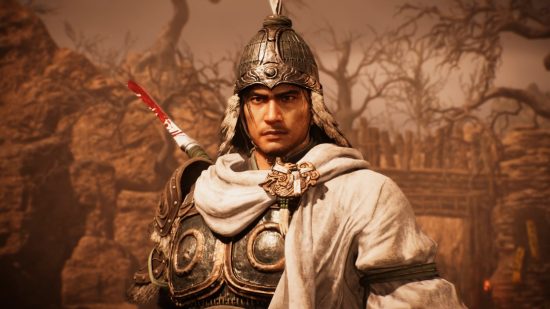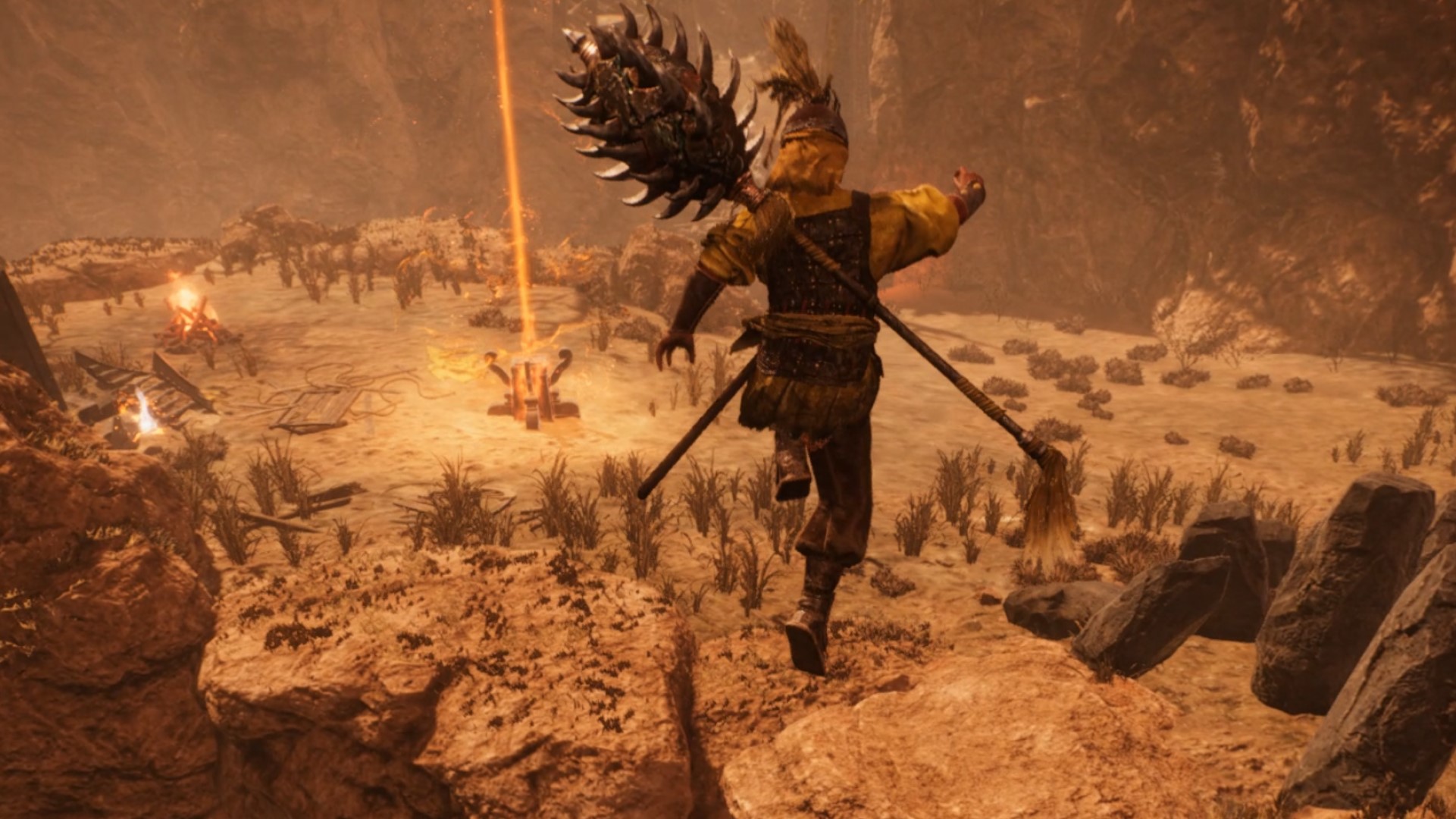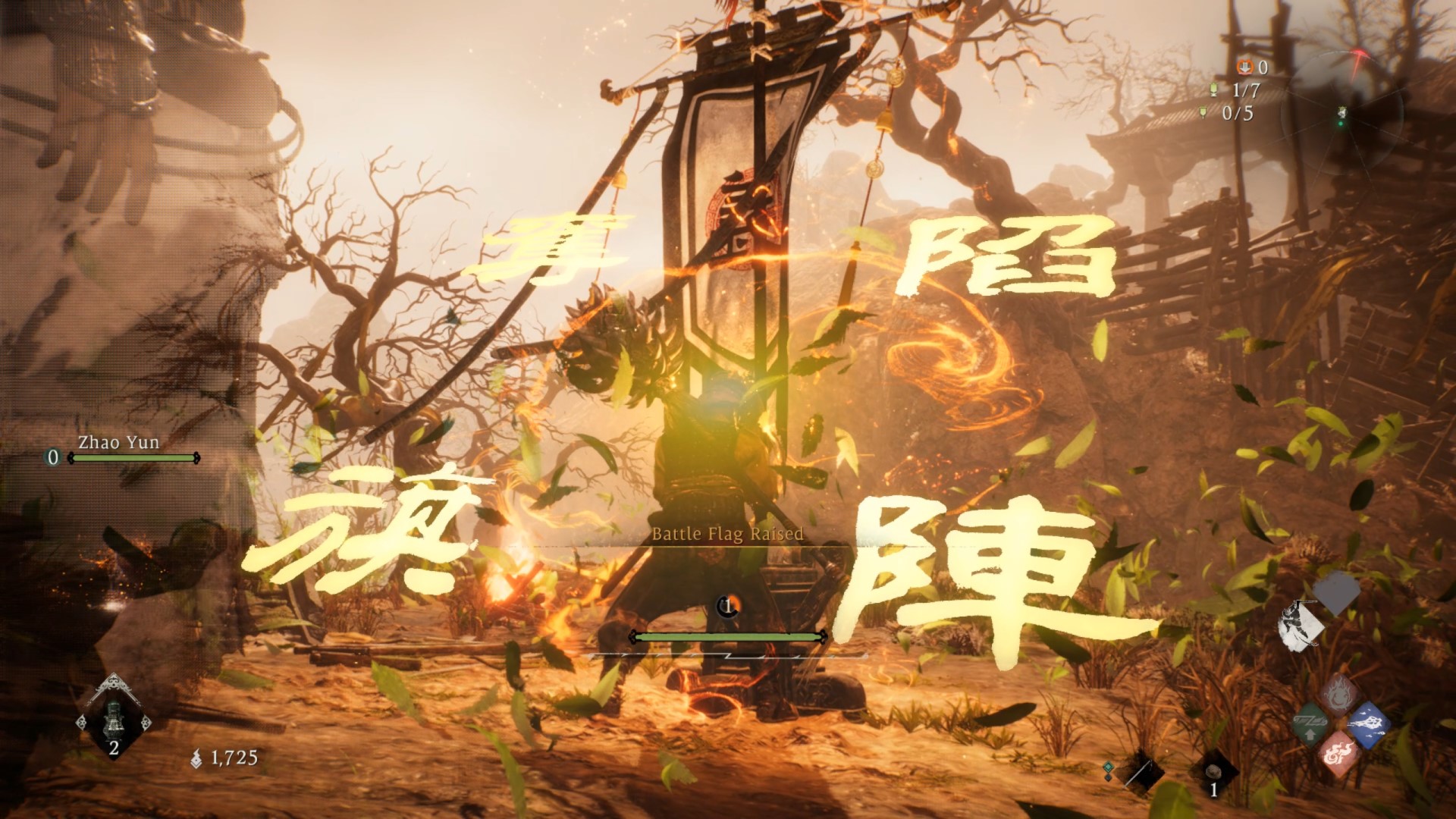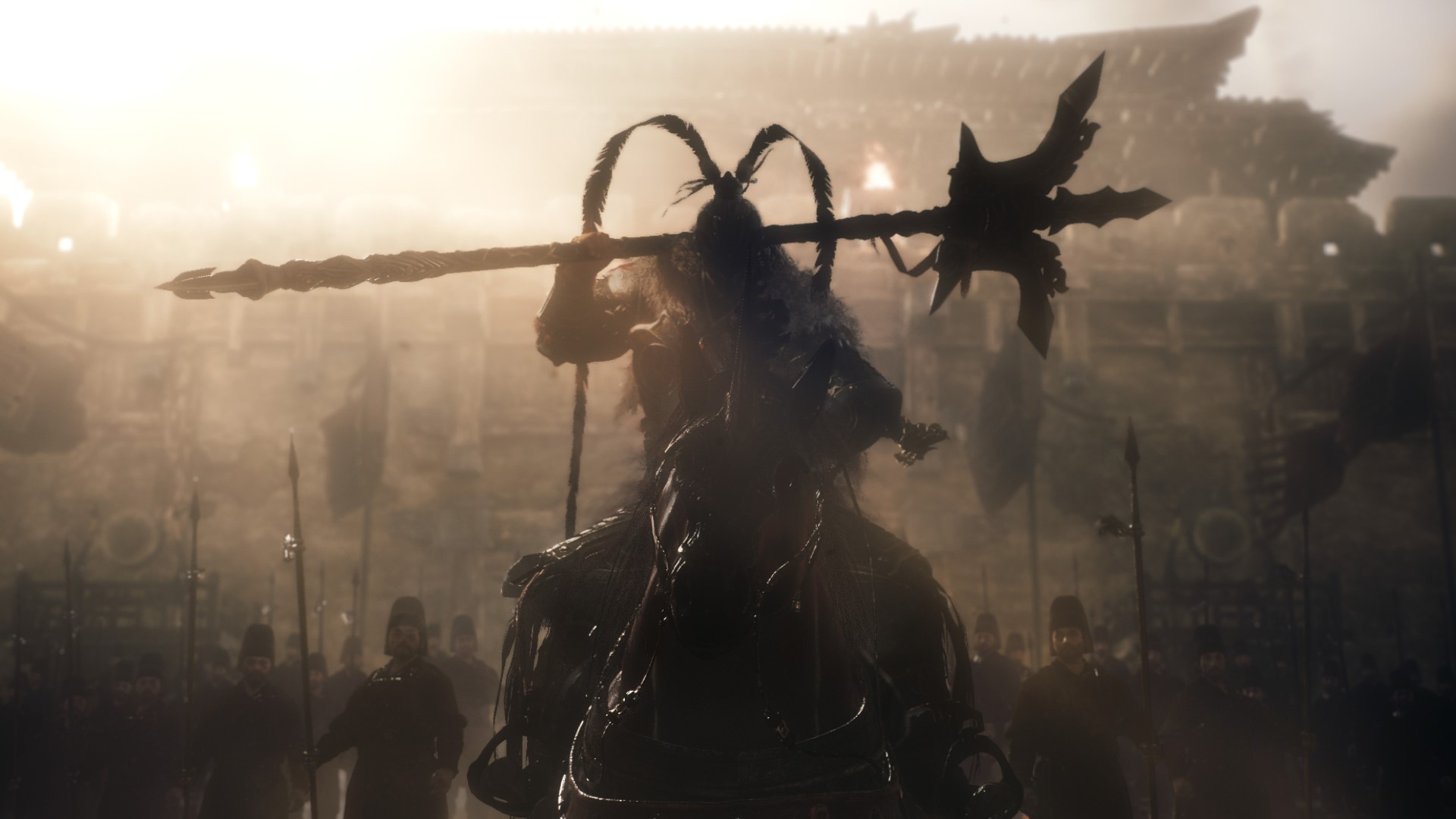At the end of my Wo Long Fallen Dynasty hands-on, I’m standing alongside a trusted comrade-in-arms in the middle of a dusty fighting arena high in the desert mountains. We’ve just slain a demonic boar the size of a cottage, and are feeling pretty good about ourselves as a direct result. While my time with Team Ninja’s last series, Nioh, has certainly come in handy, I’ve found Wo Long a much more approachable experience, even as it changes some key elements to the frantic combat formula that made its forebears such fantastic Soulslike games.
Wo Long Fallen Dynasty will feel very familiar if you’ve played either of the Nioh games, particularly Nioh 2. The emphasis is on fast light and heavy attacks, swift positioning, and punishing any openings the enemy is foolish enough to give.
As I start out, this feels like a worryingly stripped-back version of the broad toolkit present almost from the get-go in Nioh. Gone are the weapon stances and ki pulses, there’s no weapon familiarity to build up, no Onmyo magic or ninja skills to unlock. After all the time I spent juggling menus and scrutinising statistics in Nioh 2, there was a definite feeling of “is this it?” as I began my way through the two-chapter preview build.

Wo Long: Fallen Dynasty does maintain some clear elements of Nioh, though. It’s set during the Yellow Turban Rebellion that you’ll no doubt remember from countless games, if not the Romance of the Three Kingdoms itself. However, Yellow Turban rebels are quickly joined by shambling zombies and massive, demonic officers as I make my way up the desert mountain where Chapter II takes place, and things start to feel quite Nioh-esque again in swift order.
A key difference, however, is my most powerful move. It’s not some ability to unleash a powerful yokai form, although the gods do deign to help me out in time. Instead, the most lethal tool in my belt is the dodge – mapped to the controller’s B button by default, it’s more than a way to simply get out of danger. When timed correctly, the dodge allows me to step aside and shove my opponent through his own strike, using his own momentum to send him stumbling to the ground, open to a brutal counterattack.
Pulling it off feels quite a bit like successfully deflecting attacks in Sekiro, but here there’s less risk involved. If I screw up the timing of my dodge, I simply won’t get the deflection and will dart away unharmed – and even gain some distance from my enemy if I double-tap. As a backup, I’ve got a traditional guard mapped to the left bumper if I need to weather a few blows.
The dodge-based deflection is key, however, once I start running into champions and bosses. Enemies who have been possessed by demons will telegraph critical attacks with a red flash, which again may trigger some Nioh reflexes to kick in for veterans. Here again, it’s an important opportunity, but rather than responding aggressively, the key is to deflect the attack with a perfectly timed dodge, side-stepping the assault like a studied kung fu master, and then letting loose with a vicious critical strike of my own.
Imperial martial arts inform character progression as well. Rather than dumping points into traits like strength, dexterity, and wisdom, Wo Long’s stats system is built around the five elements or energy states of Taoism: earth, wood, fire, water, and metal. Boosting affinity for any of these results in bonuses to associated combat actions like recovery speed and the amount of spirit I’ll use in a deflection, but they also open up wizardry spells that I can map to my controller’s face buttons and unleash in battle: fireballs, spears of ice, rocky avalanches, and more.
You can specialise or generalise however you like: you’re given a point to use in each school at certain experience thresholds, and they’re non-transferable. As you move up each elemental tree, spells require more and more points invested in their specific element, so to unlock the most powerful magic, you’ll most likely need to concentrate your levels into one or perhaps two elements.
Another interesting new system is morale and resolve. While you’ll have an overall experience level you’ll increase as you make your way through Wo Long, each individual chapter has its own changing dynamic between the heroes and their enemies that works like a mini level system contained within each chapter. As a chapter opens, enemies usually have higher morale than the heroes do, and that puts me at a disadvantage. By picking off outlying enemies and finding places to plant my battle flag, I can increase my morale and shift the balance, gaining an edge over any enemies with lower morale.
It provides a sense of momentum: success builds upon success. However, the bonus morale I’ve picked up from killing monsters and bandits evaporates when I’m killed – unless I can make it back to the baddie who’s slain me and beat them in a rematch. This can be tricky, however: killing heroes boosts an enemy’s morale, so they tend to be tougher in round two.
This could be pretty crushing, but there’s a safety net: on death, I only lose morale I’ve gathered beyond a certain baseline, which is established by the number of battle flags I’ve put up around the level. The lesson here is clear: I want to explore everywhere before heading through the gate and taking on the area’s boss, unless I want to fight at a steep disadvantage.
By the time I’m through Chapter II, I’m relieved: sure, Wo Long is noticeably simpler than Nioh 2, but there’s plenty here to sink my teeth into. Each weapon I pick up – spears, guandao, twin swords, sabres, and more – has its own special moves to learn, there are five magic trees to explore, and there’s always some gigantic, twisted monstrosity to square off with over the next hill. As much fun as I’ve had with Nioh 2, I find that half my time in the game is spent managing my character and his inventory, and for better or for worse, that’s mostly gone in Wo Long.
Wo Long won’t win any beauty pageants, mind you – it’s a rougher-looking game, and the fact that the level I’ve played takes place in the midday desert sun doesn’t necessarily do it any favours, graphically speaking. However, combined with the cheerful presence of familiar Romance of the Three Kingdoms characters, who all speak with theatrical bravado, the sunny level I’ve sampled gives Wo Long a welcoming aura that could hardly feel more different than the horror movie vision of Sengoku-era Japan that infuses the Nioh games.
The Wo Long Fallen Dynasty release date is coming up at the beginning of March, and it’ll be on Game Pass for PC on day one. I’m eager to see more, because this new Team Ninja spin on the Three Kingdoms period has just enough of that Ninja Gaiden DNA to get my old X and Y calluses tingling again.



